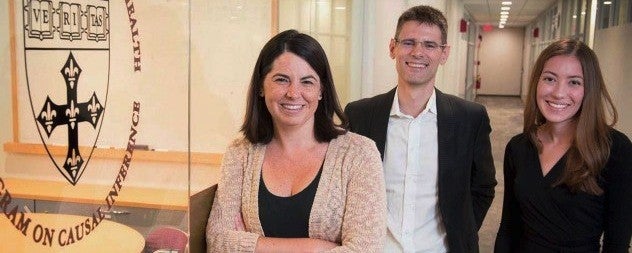What goes into making a MOOC? The short answer is a variety of people, an abundance of time, and a lot of creative thinking! This last element is what Miguel Hernan has been bringing to the new MOOC (a massive, online, open course) based on Epidemiology (EPI) 289; “Models for Causal Inference,” a core offering he’s taught for 14 years at Harvard T.H. Chan School of Public Health, and one of 20 new courses being produced by HarvardX this year.
Hernan appreciates the MOOC format for its potential to maximize his reach to non-residential and international audiences, and for allowing him to use his face-to-face teaching time with residential students in a more effective way. The flipped classroom format involves watching seven-minute single concept videos, each with a hook involving a real-world application of a concept that captures students’ attention – in Hernan’s case, the use of causal diagrams to clarify public health issues where cause and effect become tangled.
The videos require instructors to convey material in an efficient and compelling way, and according to Barbra Dickerman, a T.A. for the course who has been involved in the course development, provide the additional power of visuals, graphics, and movement to augment course content. Students also benefit from being able to repeat material and move through it at their own pace.
For Hernan, the format represents a positive shift in the dynamics of the classroom, with much more time devoted to scientific discussion, and the application and extension of core concepts – “it’s completely different, the level at which they absorb the material.” For more on the making of Hernan’s MOOC, check out this recent article in Harvard Magazine.




